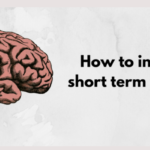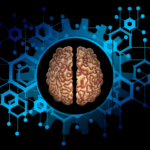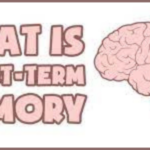Strategies for Improving Short-Term Memory
Welcome to Strategies for improving Short-term memory. Our ability to store and recall information is a vital aspect of everyday life. Short-term memory is the type of memory that holds information temporarily in our mind. It helps us to remember a phone number or an address we need to visit.
However, sometimes we may struggle to recall important details, leading to frustration and stress. Fortunately, there are effective strategies to improve short-term memory. In this article, we’ll discuss the science behind short-term memory and explore some actionable tips to enhance it.
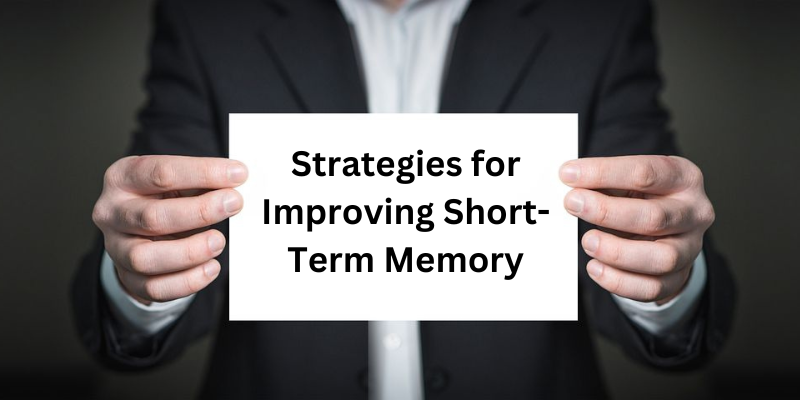
Introduction
Definition of short-term memory
Short-term memory, also known as working memory, is a type of memory system that allows individuals to temporarily store and manipulate information for a short period of time. It is responsible for holding and processing information needed for everyday tasks, such as remembering a phone number or following directions to a new location.
Short-term memory is limited in its capacity and duration, meaning it can only hold a small amount of information for a brief amount of time before it is lost or replaced. This is in contrast to long-term memory, which has a greater capacity and can store information for an extended period of time. Understanding how short-term memory works and how to improve it can lead to increased productivity, better learning outcomes, and overall cognitive health.
Importance of short-term memory in daily life
Short-term memory plays a crucial role in our daily lives, allowing us to perform a variety of tasks and activities. Here are some reasons why short-term memory is important:
- It allows us to remember information we need to complete immediate tasks, such as following directions or completing a phone number.
- It helps us keep track of conversations and participate in them effectively.
- Short-term memory helps us learn new things by temporarily storing new information until it can be transferred to long-term memory.
- It is essential for problem-solving and decision-making, as we need to hold multiple pieces of information in our minds to come up with solutions or make choices.
- Short-term memory allows us to experience the world in a meaningful way by enabling us to perceive and remember sensory information like sights, sounds, and smells.
Without short-term memory, our daily lives would be greatly impacted. We would struggle to perform basic tasks, learn new information, communicate effectively, and make decisions. Therefore, improving it can lead to numerous benefits and enhance our overall quality of life.
Common issues with short-term memory
It is essential for our everyday lives, allowing us to retain and recall information for a brief period of time. However, many people experience issues with their short-term memory. One common issue is forgetfulness, where individuals may struggle to remember recent events, appointments, or tasks. This can be frustrating and impact daily life.
Another issue is distraction, where individuals may struggle to concentrate on the information they need to remember due to external or internal factors such as noise, stress, or lack of focus. Another common issue is overload, where individuals may struggle to retain too much information at once, leading to confusion and forgetfulness.
These issues with short-term memory can impact academic or professional performance and create difficulties in completing tasks or communicating effectively. Understanding these common issues is the first step in improving short-term memory and developing strategies to overcome these challenges.
Understanding Short-Term Memory

How short-term memory works
Short-term memory, also known as working memory, is the type of memory that holds information for a brief period, usually a few seconds to a minute. It is the memory system that allows us to hold onto information while we use it to perform a task, solve a problem, or make a decision. Short-term memory works by temporarily storing information that we perceive through our senses or retrieve from long-term memory.
This information is held in a limited capacity, with the average person able to hold about 7 items, give or take 2. Short-term memory is a dynamic process that involves several stages, including encoding, maintenance, and retrieval. Encoding involves taking sensory input and converting it into a form that can be stored and used by the brain. Maintenance is the process of actively keeping the information in the short-term memory store.
Finally, retrieval is the process of accessing and using the stored information. The capacity and duration of short-term memory can be influenced by a variety of factors, such as age, attention, distraction, and complexity of the information. Understanding how short-term memory works can help us identify strategies to improve our ability to hold and manipulate information, which is essential for many cognitive tasks.
Factors affecting short-term memory
Several factors can impact short-term memory, including:
- Age: As we get older, our ability to retain information in short-term memory may decline.
- Health conditions: Certain health conditions, such as Alzheimer’s disease, Parkinson’s disease, and depression, can affect short-term memory.
- Stress: High levels of stress can interfere with memory consolidation, making it harder to remember things in the short-term.
- Lack of sleep: Sleep is essential for memory consolidation, so a lack of sleep can impair short-term memory.
- Alcohol and drug use: Excessive alcohol or drug use can impair short-term memory function.
- Attention and focus: Paying attention and being focused on the task at hand can improve short-term memory retention.
Different types of short-term memory
Here are some different types of short-term memory:
- Sensory Memory: This type of memory briefly stores sensory information, such as what we see, hear, taste, smell, and feel.
- Working Memory: Also known as “short-term memory” or “active memory,” working memory is responsible for temporarily holding and manipulating information while performing cognitive tasks, such as problem-solving, reasoning, and decision-making.
- Verbal Memory: This type of memory involves the ability to remember verbal information, such as words, numbers, and letters.
- Visual Memory: Visual memory refers to the ability to store and recall visual information, such as shapes, colors, and images.
- Auditory Memory: This type of memory involves the ability to store and recall auditory information, such as sounds and music.
- Spatial Memory: Spatial memory allows us to remember the spatial layout of our environment and navigate through it, such as remembering the layout of a new building.
Strategies for Improving Short-Term Memory
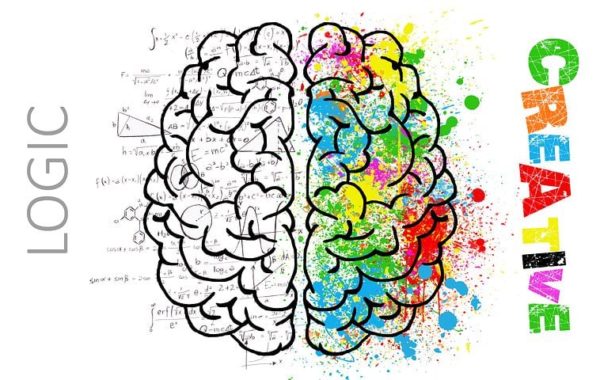
Mental exercises to improve short-term memory
Chunking
Chunking is a mental exercise that can help improve short-term memory by breaking down information into smaller, more manageable parts. Instead of trying to remember a long string of digits or words, chunking involves grouping them together into meaningful units, such as phone numbers or dates.
For example, instead of trying to remember the number sequence “7892364112” as a whole, you can chunk it into three parts: “789-236-4112.” This allows your brain to better process and store the information, making it easier to recall later. Chunking can be applied to various types of information, such as lists, names, and addresses, and can be an effective strategy for improving short-term memory capacity.
Association
Association is a powerful mental exercise that can help improve short-term memory retention. This technique involves associating new information with something that’s already familiar to us, making it easier to remember. For example, if you’re trying to remember a grocery list, you could associate each item with a different room in your house. This way, when you’re walking through your house, you’ll be reminded of the items on your list.
Association can also involve creating visual or auditory connections between items, such as associating a name with a specific sound or a face with a particular object. By making these connections, our brains can create stronger memory traces that are easier to retrieve later on. Practice using association in your daily life to improve your short-term memory retention.
Visualization
Visualization is a powerful mental exercise that can help improve short-term memory. It involves creating mental images to represent information, which can make it easier to remember and recall later. To use visualization for memory improvement, try the following steps:
- Create a mental image: When trying to remember something, create a mental image of it in your mind. For example, if you’re trying to remember a phone number, visualize the numbers in your mind.
- Make it vivid: Make the mental image as vivid and detailed as possible. Use colors, shapes, and textures to make the image more memorable.
- Link it to something familiar: Connect the mental image to something that you already know well, such as a familiar place or person. This can make it easier to remember.
- Repeat it: Repeat the mental image to yourself several times to help it stick in your memory.
Visualization can be a useful mental exercise for improving short-term memory because it engages the visual and spatial parts of the brain, which can help with memory retention and recall.
Rehearsal
Rehearsal is a mental exercise that involves repeating information over and over again to help store it in short-term memory. This technique can be particularly useful for remembering lists, phone numbers, and other types of information that you need to recall quickly. There are two main types of rehearsal: maintenance rehearsal and elaborative rehearsal.
Maintenance rehearsal involves repeating information without trying to connect it to other knowledge. Elaborative rehearsal, on the other hand, involves making meaningful connections between the new information and existing knowledge. This type of rehearsal is thought to be more effective for long-term memory retention.
To use rehearsal as a memory strategy, try repeating information aloud or in your head, creating mental associations with the information, or writing it down multiple times. With practice, you can improve your short-term memory and enhance your ability to recall important information.
Lifestyle changes that boost short-term memory
Physical exercise
Physical exercise is not only beneficial for our physical health, but it can also improve our cognitive abilities, including short-term memory. Exercise has been shown to increase blood flow and oxygen to the brain, which can help improve cognitive function. In particular, aerobic exercise has been found to boost short-term memory by increasing the size of the hippocampus, the brain region responsible for memory formation.
Regular physical exercise can also reduce stress, improve mood, and promote better sleep, all of which can have positive effects on short-term memory. To incorporate physical exercise into your lifestyle as a way to boost your short-term memory, aim for at least 150 minutes of moderate-intensity exercise per week, such as brisk walking, cycling, or swimming. You can also try incorporating strength training exercises, such as weight lifting, into your routine to further enhance your cognitive function.
Brain-healthy diet
Eating a brain-healthy diet is an effective lifestyle change that can boost short-term memory. A diet rich in nutrients, antioxidants, and healthy fats can help protect the brain from age-related damage and improve cognitive function. Some of the best foods to include in a brain-healthy diet are:
- Fatty fish, such as salmon, tuna, and sardines, which are high in omega-3 fatty acids that can improve brain function and memory.
- Berries, such as blueberries and strawberries, which are packed with antioxidants that can protect the brain from oxidative stress.
- Leafy green vegetables, such as spinach and kale, which are high in vitamins and minerals that support brain health.
- Nuts and seeds, such as almonds, walnuts, and pumpkin seeds, which are rich in healthy fats, protein, and vitamins that support brain function.
In addition to incorporating these foods into your diet, it’s also important to limit your intake of processed foods, sugar, and unhealthy fats, which can have a negative impact on cognitive function. By making these dietary changes, you can support your brain health and improve your short-term memory.
Sleep and stress management
Getting enough sleep and managing stress are two lifestyle changes that can have a significant impact on short-term memory. Sleep is essential for memory consolidation, which is the process of transferring information from short-term to long-term memory. Without enough sleep, this process is disrupted, making it harder to remember new information.
Adults typically need 7-9 hours of sleep each night, but some people may require more or less. Additionally, managing stress is important because high levels of stress can interfere with memory consolidation, making it harder to remember things in the short-term.
Techniques like mindfulness meditation, yoga, and deep breathing can be effective ways to manage stress and improve short-term memory. By making sleep and stress management a priority, you can support your brain’s ability to retain new information and improve your short-term memory.
Use of external aids to aid short-term memory
Memory aids and techniques
External aids can be useful tools for aiding short-term memory. Memory aids and techniques can help you remember important information and reduce the cognitive load on your brain. Some common memory aids include:
- Note-taking: Writing down important information can help you remember it later.
- Lists: Creating lists can help you remember multiple items or tasks that you need to complete.
- Mnemonics: Using mnemonic devices, such as acronyms or visual imagery, can help you remember information more easily.
- Timers and alarms: Setting timers or alarms can help you remember to complete tasks or take medication at specific times.
- Smartphones and digital apps: There are many digital tools available that can help with short-term memory, such as note-taking apps, reminder apps, and calendar apps.
By using these memory aids and techniques, you can support your short-term memory and reduce the risk of forgetting important information.
Technology and apps for memory improvement
Technology and apps can be powerful tools for improving short-term memory. There are a variety of memory-focused apps available for smartphones and tablets that can help you remember important information. For example, there are apps that allow you to create to-do lists, set reminders, and create digital notes.
There are also apps that use spaced repetition techniques, which involve repeating information at specific intervals to help with memory retention. Additionally, there are wearable devices, like smartwatches, that can remind you of important events and appointments throughout the day. Another option is to use digital voice recorders to record important information, such as notes from a meeting or a lecture, and play them back later.
These external aids can be particularly helpful for people with memory impairments or those who have difficulty remembering information in the short-term. By using technology and apps to support your memory, you can improve your ability to remember important information and complete tasks more efficiently.
Applications and Best Practices
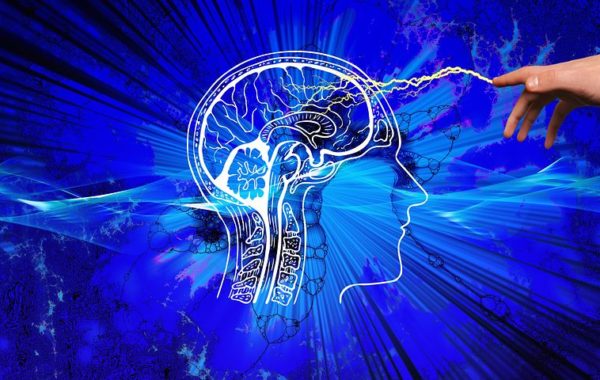
Applying strategies to specific scenarios
While there are many strategies that can be used to improve short-term memory, it’s important to apply them in a way that makes sense for your specific needs and situations. For example, if you’re a student, you might use mnemonic devices to remember important concepts for a test. If you work in a fast-paced environment, you might use digital tools, like reminders and note-taking apps, to help you remember important tasks and deadlines.
When applying memory strategies, it’s important to consider factors like the type of information you need to remember, the amount of time you have to learn it, and the context in which you’ll be using it. Additionally, it’s important to practice these strategies regularly so that they become a habit and are easier to use when you need them. By applying memory strategies to specific scenarios, you can improve your ability to remember important information and perform tasks more efficiently.
Learning and education
Short-term memory strategies can be applied in learning and education to help students retain new information more effectively. For example, using mnemonic devices, such as acronyms or visual associations, can be helpful for memorizing lists, formulas, or other types of information. Another effective strategy is to chunk information into smaller, more manageable pieces.
This can be especially helpful for learning new vocabulary words, where breaking words into smaller parts can make them easier to remember. In addition, teachers can use repetition and rehearsal techniques to help students remember important information.
For example, asking students to repeat key points from a lesson or providing opportunities for practice and review can be effective ways to reinforce new information. By using these short-term memory strategies in the classroom, students can improve their ability to remember important information and apply it to future learning tasks.
Work and productivity
Improving short-term memory can have a significant impact on work and productivity. Short-term memory is essential for completing tasks that require attention and concentration, such as reading and responding to emails, following instructions, and managing multiple projects simultaneously. By improving short-term memory, you can better retain and recall important information, which can increase efficiency and reduce mistakes.
Best practices for enhancing short-term memory in the workplace include organizing tasks into manageable chunks, creating to-do lists, and using visual aids like diagrams and flowcharts to help retain information.
Additionally, taking short breaks throughout the day can help to refresh the brain and improve memory retention. By incorporating these best practices and improving short-term memory, you can enhance your work and productivity, leading to better performance and greater success.
Daily life and aging
As we age, our short-term memory can start to decline, making it harder to remember important information. However, there are several applications and best practices that can be used in daily life to support memory as we age. For example, creating daily routines and sticking to them can help improve memory retention by reducing the cognitive load on the brain.
Using external aids like to-do lists, reminders, and calendars can also be helpful for remembering important appointments and tasks. Engaging in regular exercise, eating a healthy diet, and getting enough sleep can also support brain health and improve memory.
Additionally, it can be helpful to practice mindfulness meditation, which has been shown to reduce stress and improve cognitive function. By incorporating these applications and best practices into our daily lives, we can support our brain health and improve our short-term memory as we age.
Frequently Asked Questions
Q: What are some lifestyle changes that can improve short-term memory?
A: Getting enough sleep, managing stress, eating a healthy diet, and engaging in regular exercise are all lifestyle changes that can support brain health and improve short-term memory.
Q: Are there any mental exercises that can improve short-term memory?
A: Yes, there are several mental exercises that can improve short-term memory, such as rehearsal, visualization, and association techniques. These exercises involve actively engaging with new information and practicing the retention of that information over time.
Q: Can technology and apps be used to improve short-term memory?
A: Yes, technology and apps can be used as external aids to improve short-term memory. There are a variety of memory-focused apps available that can help with organization, reminder setting, and spaced repetition techniques.
Q: Is short-term memory decline a normal part of aging?
A: Yes, it is normal for short-term memory to decline somewhat as we age. However, there are strategies that can be used to support memory and slow down this decline, such as practicing mindfulness, staying mentally active, and incorporating brain-healthy lifestyle changes.
Key Points Recap
Here are some of the key points to Strategies for Improving Short-Term Memory.
| Key Takeaways for Improving Short-Term Memory |
|---|
| Focus your attention to remember information |
| Use mnemonic devices to aid memory recall |
| Engage in mental exercises to improve memory |
| Make lifestyle changes that support brain health |
| Use technology and apps as external aids |
| Practice mindfulness and stay mentally active as you age |
Strategies for Improving Short-Term Memory Conclusion
In conclusion, short-term memory is an important cognitive function that allows us to retain and recall information for a brief period of time. While some degree of decline in short-term memory is a normal part of aging, there are several strategies that can be used to improve and support this important function.
By focusing our attention, using mnemonic devices, engaging in mental exercises, making lifestyle changes, and using technology and apps as external aids, we can support our short-term memory and overall brain health. By incorporating these strategies into our daily lives, we can improve our ability to remember important information and maintain cognitive function as we age.

